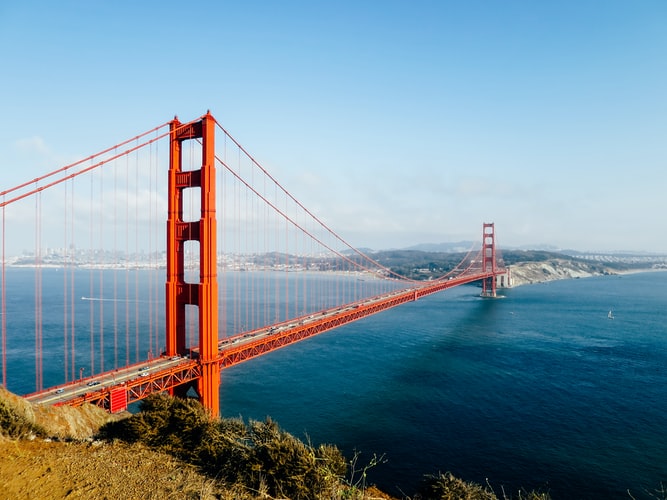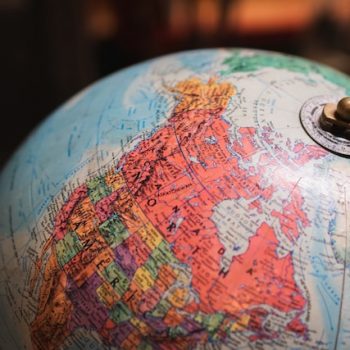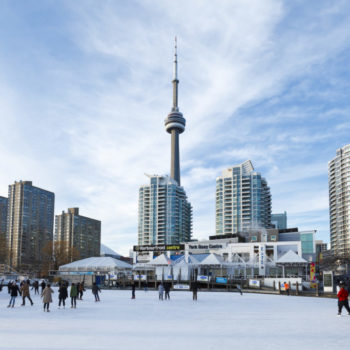The startup ecosystem of the USA and Canada are two dominant forces that occupy top-ranking positions globally. Their incredible diversity, regional differences, and population size create a complex interconnected web of ecosystems and the strongest represented continent.
This article will discuss some of the core features of the two North American startup ecosystems, and present the limitations and strengths of each one. The leading regional ecosystems present will also be explored briefly.
Are you interested in startup innovation and entrepreneurship? You can access more reports on global and regional economic development as well as our new Coronavirus Innovation Map that shows the best countries fighting the pandemic and facilitating new developments in the pandemic era.
Top Performing Startup Cities in the USA & Canada

The North American startup ecosystem is made of the United States and Canada. Note that Mexico is found in the Latin America section of our annual Global Ecosystem Report. You can find the 2020 ranking and insights here. The North American region has the biggest representation of startup ecosystems in our annual report, with 412 in total and 383 of those from the United States. You can read an overview of the global startup scene by continent in our relevant guide here. It is important to note, that startup ecosystems do not just represent cities but clusters of activity. Due to its size, the United States specifically requires extensive clustering of large urban centers like the San Francisco Bay Area that includes San Jose and Palo Alto.
- Click here for a detailed look at more than 23424 startups in the United States plus coworking spaces, accelerators and incubator spaces.
- Click here for a detailed look at more than 2356 startups in Canada plus coworking spaces, accelerators and incubator spaces.
The United States
The United States startup ecosystem is without a doubt the dominant global ecosystem. This is not only in its scale and authority but also by the margin between the USA and the second-best ecosystem, the United Kingdom. In comparison, the UK has a fifth of the total score compared to the United States.
This is also evident by the fact that 10 out of the Top 25 Global Ecosystems are from the United States, including the San Francisco Bay Area, New York, Boston Area, Los Angeles Area, Seattle, and Chicago.
While population size and technology are important weapons in the arsenal of the startup ecosystem, the United States has something even more important. The entrepreneurial culture, mindset, and flexible government regulations are key factors that have made it hard to replicate the success of this ecosystem anywhere else.
Recently, the United States startup ecosystem has also taken the lead in the fight against the Covid-19 pandemic, with innovative health tech solutions.
Some promising ecosystems that are overperforming in their verticals in the USA outside the major centers should also be mentioned here. Madison, Wisconsin, has seen a substantial increase this year, placing it within the Top 100 startup ecosystems globally. A vibrant college town with strong verticals in the health and hardware industries, Madison is actively supported by the Wisconsin Economic Development Corporation (WEDC). The city is showing a strong commitment to promoting its unique ecosystem and taking an active approach to establishing a hub of talent, innovation, and growth.
Canada

Canada has retained a position in the Top 4 amongst other well-performing players like the United States, Israel, and the United Kingdom. Some of the larger ecosystems in the country, like Toronto and Vancouver, have seen a small drop in the momentum of growth. On the other hand, smaller ecosystems are coming into their own with a strong focus on verticals of software and data, e-commerce, and retail. In contrast to the United States, the ecosystems of Canada are regionally disconnected, however, this has not proven to be a disadvantage. A familiar name here will be the tech giant, Shopify that came out of Ottawa, and has continued to reign as one of the best e-commerce platforms globally.
In the Top 100, the cities of Ottawa, Edmonton, and Calgary have shown impressive gains this year. Kingston has also seen its ecosystem rise to a Top 150 – among 1000 cities. The growth of the smaller ecosystems is a very positive sign for developments in the area, however, we would love to see some Canadian cities gaining global hub status and going back in the Top 20 in the near future.
One area where Canada has shown its considerable strength is health and Covid-19 innovation, placing it in the global Top 5.
Overall, there are signs that the ecosystem as a whole is gaining momentum, undoubtedly supported by the focus on ecosystem development, government incentives, and increased financing. In Western Canada, the capital of Alberta, Edmonton, is taking advantage of its young population and university talent pool, with an impressive network of meetups, incubation, and accelerator programs and is heavily investing in ecosystem development. In addition to the half a dozen incubators on offer, Edmonton can boast of being the home of the third-best university-based incubator globally, TEC Edmonton.
Strengths and Limitations of the Startup Ecosystem in the USA & Canada
In this section, we will explore the strengths and limitations of the startup ecosystem in the USA and Canada.
United States Startup Ecosystem Strengths

Entrepreneurial Mentality – Startups in the United States practice a global domination mindset, that drives them for exponential growth from day one. This is supported by access to funding (second biggest strength) but is also supported by other driving factors like risk tolerance, and an open and collaborative mindset, where there is a flow of information and ideas.
Funding – The United States ecosystem has long supported early and late-stage funding for startups. With the only true contender being China, the United States has some of the highest-valued startups in the world and disproportionate access to alternate funding sources through crowdfunding, angel investors, and VCs in comparison to European and Asian startup ecosystems.
Growth mindset – The growth mindset advantage is directly tied or to a large degree dependent on point number 2, which is funding. As US companies are fighting for market penetration and trying to cause a stir, direct money flow is achieved through late-stage funding that keeps the wheels turning. This is in contrast to most ecosystems, elsewhere, especially in Europe, where late-stage funding is infrequent at best and companies need to tread slowly and carefully to stay alive.
United States Startup Ecosystem Limitations
Adopting to local markets – One of the potential drawbacks of the United States startup ecosystem compared to Europe and Asia is the ability to adapt to local market needs from the start. By nature, European and Asian ecosystems need to target countries with different languages. Their smaller population, in some cases, is also forcing them to look outwards. While this isn’t directly a problem for the large national market the US offers, European startups can pivot to the demands and needs of different cultures much faster overall.
Work-life balance – This is one area where the United States’ mindset towards world domination is not coveted. One survey by Deloitte found that 77% percent of people in the US have experienced burnout in their jobs while 90% of them responded affirmatively to whether stress caused by their job is impacting their work negatively. The United States has no federal or state-mandated number of paid public holidays or minimum paid vacation, the only country in the Organization for Economic Cooperation and Development group that includes 36 nations. This unsustainable work ethic is not as prevalent in other ecosystems where family and downtime are highly valued.
Canada Startup Ecosystem Limitations

Funding – While Canada has been making leaps in the area of venture capital, it is still comparatively behind its neighbor and needs to scale higher to retain and support startups in its ecosystem. The Covid-19 pandemic landed a heavy blow on venture capital investments, with the Canadian Venture Capital & Private Equity Association reporting a 45% quarter-over-quarter decline in Q1 2020.
Risk Aversion – Canada has long been considered a more conservative and risk-averse culture than its neighbor, an idea that is largely tied to wider structural issues like access to capital. The failings of past giants in R&D, like Nortel and BlackBerry, may also have painted a “slow is safest” approach towards disruptive innovation. While “betting big doesn’t mean you’ll make it big”, the Canadian startup ecosystem will need to develop its own culture-appropriate strategies to balance the risk-averse nature of its entrepreneurial culture. It will also surely need to leverage its healthy influx of immigrant population, which brings a more risk-tolerant approach to the field.
Canada Startup Ecosystem Strengths
Talent – While access to talent is not an issue in most of the regional Canadian ecosystems, retaining it has been a sore point in the past. Now, relaxed immigration policies and the new startup visa that launched in 2018, after a pilot program in 2013, are key indications of the commitment to attracting global talent. The Global Talent Stream program launched in 2017 by the federal government to make it easier for businesses to hire highly-skilled global workers, has also brought more than 40,000 people to Canada, including 24,000 in areas of computer programming and software engineering. With the United States tightening immigration laws, Canada is well-positioned to take advantage of the influx of international talent looking for a supportive environment during and after the Covid-19 pandemic.
Universities – Canada is home to more than 60 university-led incubator and accelerator programs that are pushing innovation forward and creating a new generation of entrepreneurs. The contentious open IP university system has allowed more companies and student entrepreneurs to develop companies and be able to take their IP with them when they go. This is in addition to government services that provide access to education, IP legislation, and strategic growth, for companies to be developed and commercialized successfully.
StartupBlink organizes monthly pitching events focusing on one startup ecosystem at a time that is looking for foreign investors. Connect with other entrepreneurs and local ecosystem thought leaders. Join us here.








People reacted to this story.
Show comments Hide commentsNotice: Function map_meta_cap was called incorrectly. When checking for the edit_comment capability, you must always check it against a specific comment. Please see Debugging in WordPress for more information. (This message was added in version 6.1.0.) in /var/www/startupblink_blog/wp-includes/functions.php on line 6031
[…] pushed to help the event of early-stage and growth-stage startups. In accordance with StartupBlink, the U.S. has over 380 startup ecosystems out of the 412 in North America, comprising the biggest world share of […]
Notice: Function map_meta_cap was called incorrectly. When checking for the edit_comment capability, you must always check it against a specific comment. Please see Debugging in WordPress for more information. (This message was added in version 6.1.0.) in /var/www/startupblink_blog/wp-includes/functions.php on line 6031
[…] to support the development of early-stage and growth-stage startups. According to StartupBlink, the U.S. has over 380 startup ecosystems out of the 412 in North America, comprising the largest global share of […]
Notice: Function map_meta_cap was called incorrectly. When checking for the edit_comment capability, you must always check it against a specific comment. Please see Debugging in WordPress for more information. (This message was added in version 6.1.0.) in /var/www/startupblink_blog/wp-includes/functions.php on line 6031
[…] to support the development of early-stage and growth-stage startups. According to StartupBlink, the U.S. has over 380 startup ecosystems out of the 412 in North America, comprising the largest global share of […]
Comments are closed.